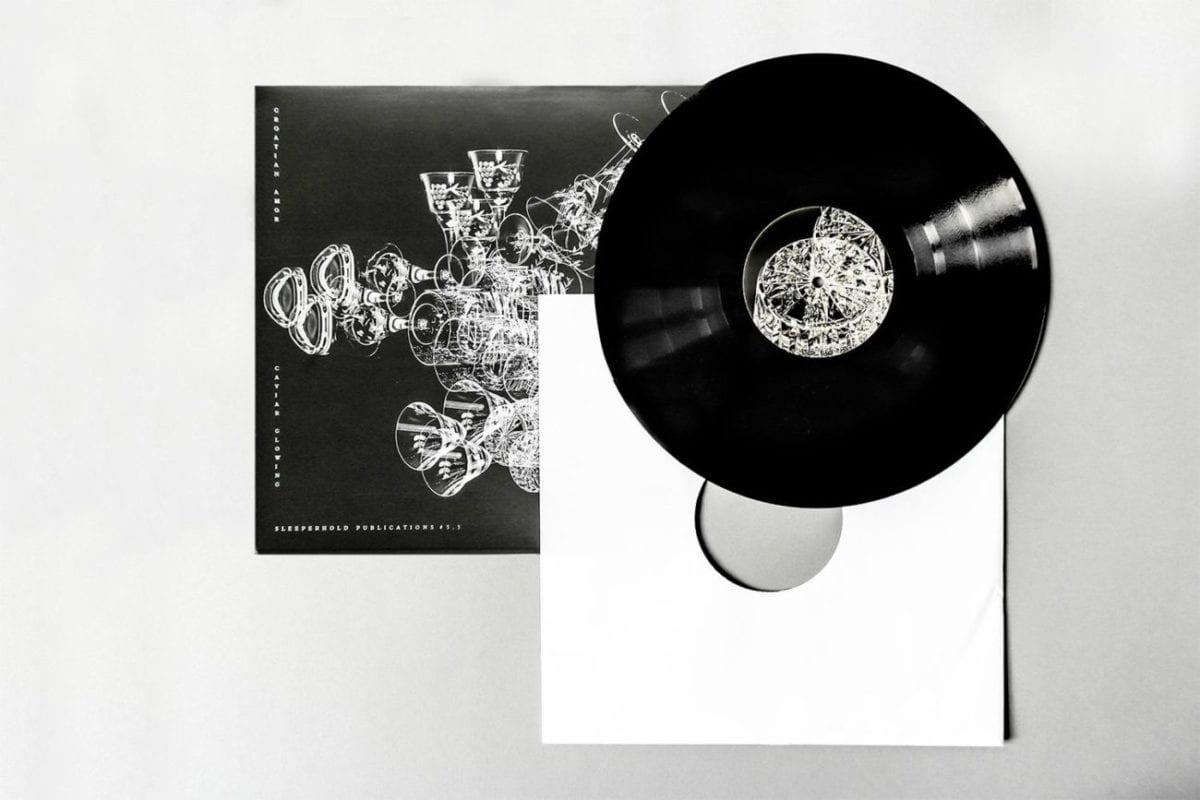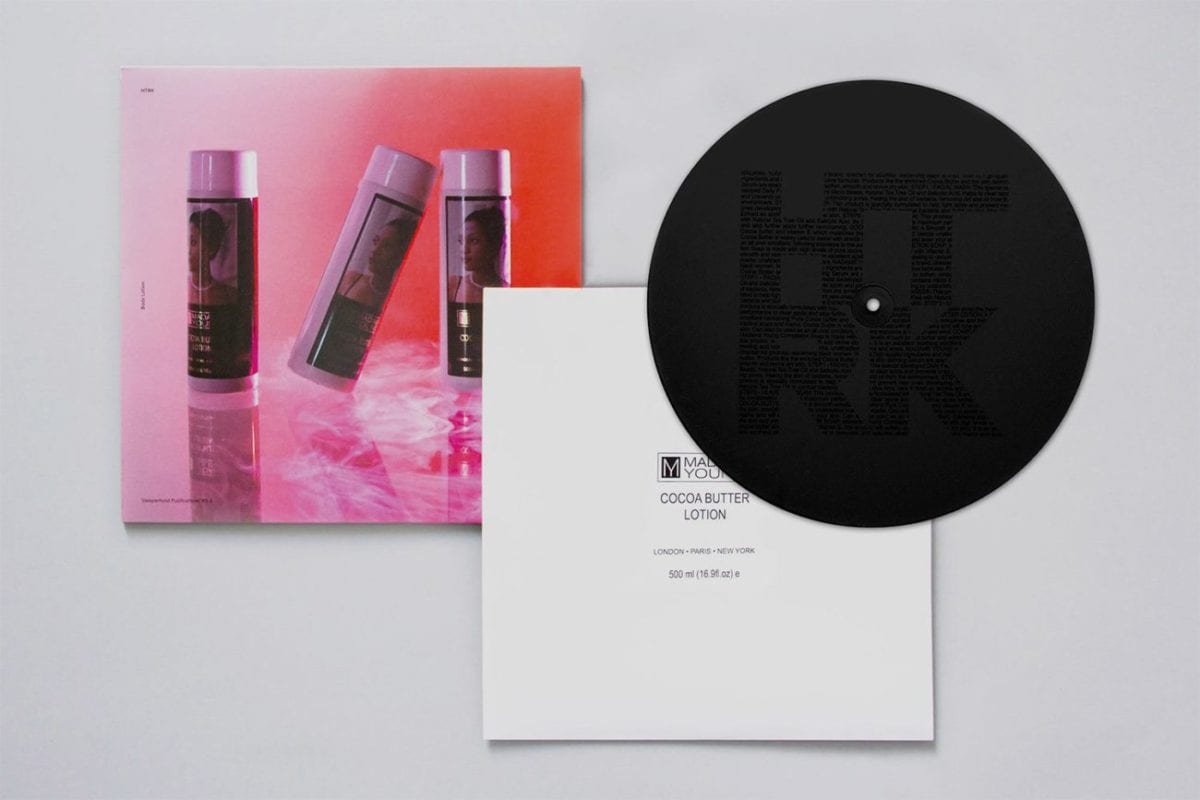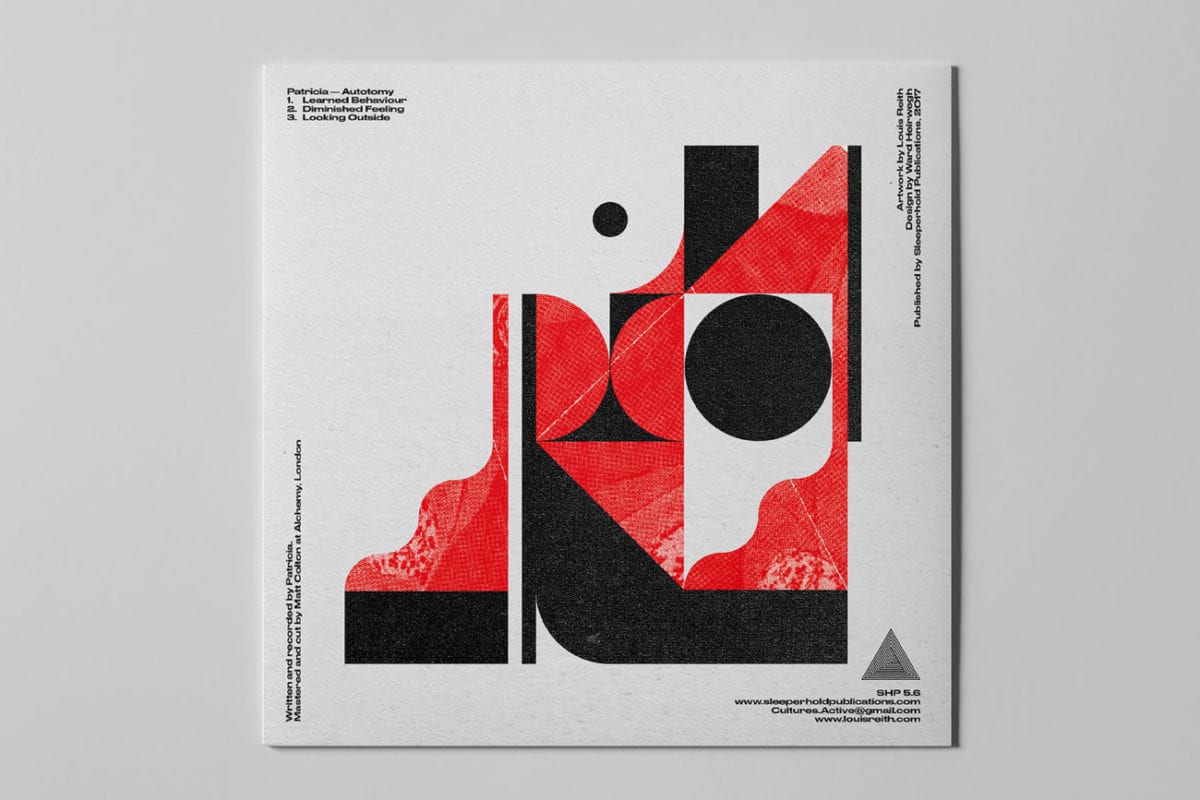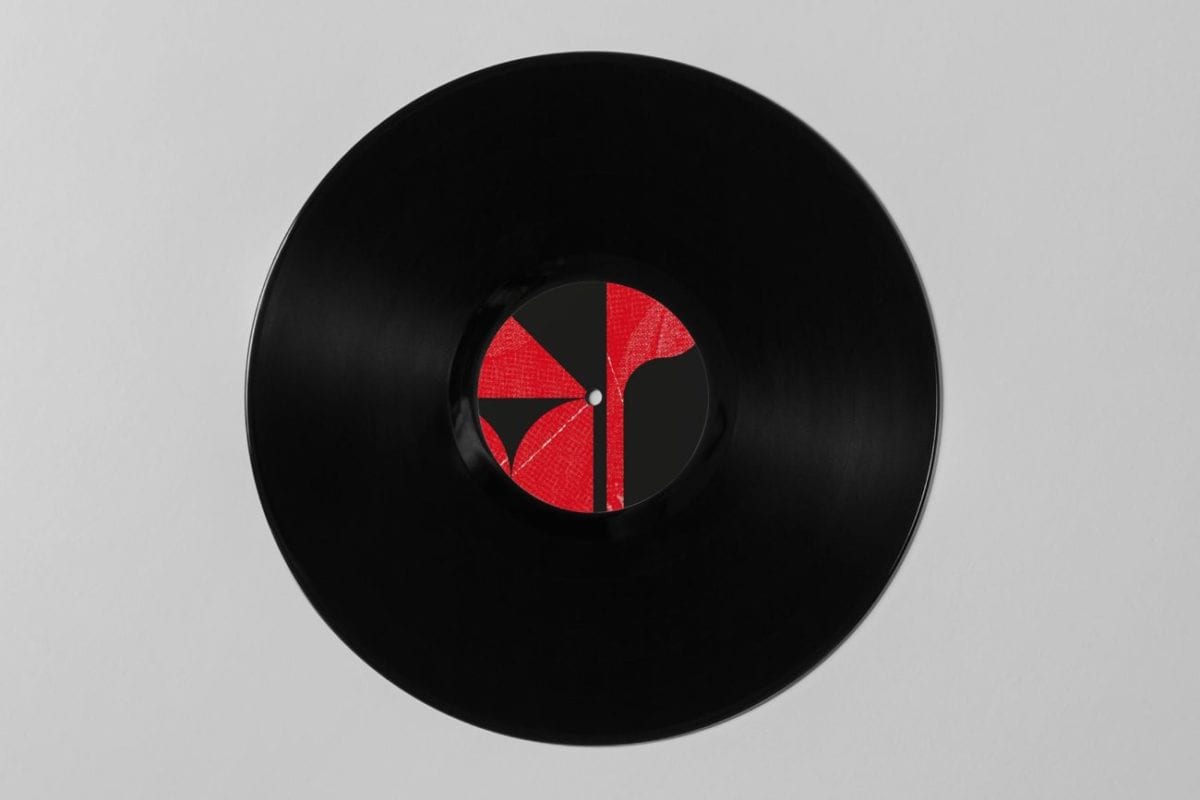
Operating out of Antwerp, Belgium, Sleeperhold Publications is an ephemeral platform committed to building bridges between diverse forms of artistic expressions through unique and carefully-crafted release packages, involving a flurry of media that range from the photobook format through a book of short stories onto a special deck of cards.
Having previously released material from Blackest Ever Black affiliated duo Tropic Of Cancer, Melbourne’s HTRK and Posh Isolation staples Croatian Amor, SHP return this Autumn with their sixth number out of ten, courtesy of New York-based producer Max Ravitz aka Patricia.
For the occasion we caught up with SHP honcho Ward Heirwegh to discuss the making of ‘Autotomy‘ and investigate further into the publication’s raison d’être as Ward opens up on the motivations that prompted him to start the venture, creative cross-pollination and further plans for the future. Stream the magnificent and haunting ‘Dimished Feeling‘ off Patricia’s EP down below.
Interview by Baptiste Girou

"Coming from a background in hardcore punk I decided to channel all these mixed emotions into a project where I could stretch the boundaries of editorial design and see what is possible."
As your Discogs page explains, Sleeperhold Publications is a very unique project whose aim is to “produce ten outputs, spanning different realms of the arts, and then cease to exist”. Please tell us more about the origins of the label, what’s been the starting point to the SHP venture?
That small snippet describes the project quite accurately, even though I have no hand in creating that Discogs page. The project basically started as from a certain realization about artistic strategies combined with DIY ethics. In 2007 I completed my studies in graphic design and, as some of us have experienced, reality kicks you in the face quite hard once you exit that safe bubble of liberal arts education.
You’re trying to get your own apartment, find a job that pays decent wage… and you realise that getting around and still having a rewarding and creative position doesn’t always go hand in hand. So I basically decided to create that job myself. Enter Sleeperhold Publications.
You could say the project functions as a pre-made excuse to experiment. A vehicle to be able to work with the people I love and admire, to be able to make mistakes, to be able to follow no guidelines and do as I see fit. My position as a graphic designer comes with certain strengths and weaknesses, which combined, form quite the skillset.
Most of the time you work as a “translator“. Someone comes to you, with his/her content, and wants you to reshape that vast amount of information into something “readable”, for a specific audience. You’re used to working with artists, musicians, architects, people from the performing arts sphere… but there’s little room to generate content yourself… I realise I’m putting everything into extremes, but bear with me.
Coming from a background in hardcore punk I decided to channel all these mixed emotions into a project where I could stretch the boundaries of editorial design and see what is possible, standing on the crossroads of so many artistic disciplines.
You described the project as a label, but that’s not really the correct term. It’s more an ephereal platform for artist publications. It embraces its utterly themeless reality and is completely open to fill in as I or we (if I’m working together with someone) see fit. Up to now a photobook, some silkscreened posters, a deck of gaming cards, a book of short stories based on J.G. Ballard and some vinyl records were released. It bears a lot of resemblance to the prison in ‘THX_1138‘: a vast, open space where anything is possible.

"I tend to choose the musician(s) first but always have a specific type of visual artist in the back of my mind."
The platform remained silent for the past three years so it’s a welcome return in “business”. What have you been up to since the release of your last EP, HTRK ‘Body Lotion’?
Well. Not much, to be honest. That open space can be inspiring but sometimes also a prison. That THX 1138 reference comes in quite handy now. After a quite intense period I just organically slowed down and came to a halt. The HTRK EP you mention came quite fast after the Croatian Amor EP. Both releases were really true to how I envisioned collaborating with artists and triggered something quite profound inside me.
My practice as a graphic designer also became more and more demanding and I took up a teaching position at Sint Lucas School of Arts in Antwerp. In short, I needed a break from publishing. But I don’t consider this silent period as a disadvantage. Since SHP is not a real label and I don’t have to generate income from it, it gives me the time to put things in perspective and think things through. But I have not sit still, of course. Sleeperhold was invited to give lectures, publish text-based material, organise a summer school… so maybe it’s best to see this silent period of the publishing house as an active one for its side-projects.
At Inverted Audio, we strongly believe in the essential cross-pollinating force between audio and visual art, which is the key concept behind the magazine. My question is, how do you marry both visions? How do they feed one another?
I don’t see them as separate visions, as they both tell stories. But they do feed one another. The general Idea behind Sleeperhold was to cross-breed within a wide range of creative output. There is nothing more rewarding (to me) than the possibility to take part in the practice of someone else, to work closely together in a situation of full concentration based on mutual commitment and trust. So the main idea is to approach both of them with an openness and willingness to experiment. Sometimes beauty arises from elements that crash as well. And one can only learn from the artistic strategies that characterise someone’s work.


"The choice to only use 12-inch vinyl records was absolutely deliberate...It is a physical experience to hold a vinyl record, the same way a polaroid is not just a picture, but an object. They both have a thickness and vulnerability."
Given the reduced lifespan of the project, the impact of each release has to be maximal. How do you proceed for the artist/material selection? Is it music first or design first?
It depends a bit on the project. With the vinyl records this was all approached a bit differently. The choice to only use 12-inch vinyl records was absolutely deliberate. Sleeperhold doesn’t put out digital files, for example. It is a physical experience to hold a vinyl record, the same way a polaroid is not just a picture, but an object. They both have a thickness and vulnerability.
Having your music on this format is always rewarding and for a visual artist the 32 cm square is much more inviting to work with than having your artwork on a CD slipcase. Or worse, just as an illustration that goes along with the digital files.
I tend to choose the musician(s) first but always have a specific type of visual artist in the back of my mind. Sometimes it’s really centred around giving every party involved the equal amount of space. SHP3 (a deck of cards), for example, came to life after reading up on the Fluxus movement.
Back in the day, they created flux-kits: boxes which house games, puzzles, messages… to de-structure their happenings. I was looking for a way to include several peoples from various artistic disciplines into one physical entity, but still provide each participant with their own blank canvas. So a deck of cards seemed like a good option. This nicely divided the whole project into neat, equal parts so that everyone involved could pour their specific concerns on this playable support.
Do you already have a pool of artists you like in which you draw the “one” or do you start browsing the internet in search for something very specific once you have the tracks in hand?
There’s a list of people whose work I find interesting, depending on the situation they should be confronted with. They all share that love for experimentation. And this can happen in all sorts of domains, ranging from the way they create sounds to a different mentality when it comes down to distributing their output. For some musicians it doesn’t feel so comfortable to abandon their visual sphere, which makes it logically less interesting for me.
It really depends on who should be their sparring partner. Sometimes they choose themselves, sometimes I propose a bunch of people. HTRK, for example, are really good friends with David Ferrando Giraut, who did the artwork. He was living with Nigel in London at a time when Sean would visit to sketch out songs in Nigel’s tiny room.
They’ve collaborated before also: Jonnine has narrated and appeared in some of his films while Nigel provided the music. Giraut’s previous installations have often carried a musical lean — he’s used LP covers and turntables in the past — so it made perfect sense to bring them together again.

"This world needs more Patricia on vinyl, so naturally I was quite honoured he was willing to work on this project together with me."
Let’s speak about your new release, ‘Autotomy’, which comes from a fav of ours aka Patricia. When was the first time you crossed paths with Max’s music?
I discovered his ‘Bem Inventory‘ release when it came out on Opal Tapes and was immediately hooked. Max’s music has that analogue aesthetic and warmth but it stills feels distant somehow. Also the way he uses Soundcloud to get his music out is actually quite DIY. This world needs more Patricia on vinyl, so naturally I was quite honoured he was willing to work on this project together with me.
What is the present edition comprised of?
Well, it is a 12-inch EP, housed in a red paper sleeve and cardboard cover and features a collaboration between dutch visual artist Louis Reith and Brooklyn-based musician Patricia (Max Ravitz). The record has the music on the front and Louis Reith’s distinctive artwork adorns Autotomy’s sleeve and one side of the wax. It’s created as a limited print run and can be bought on the Sleeperhold website or from a selection of distributors.
Max has released music on labels such as Opal Tapes, L.I.E.S., Russian Torrent Versions, Ghostly International. … and has a steady stream of collaborative projects with an array of artists (released under monikers such as Masks, Pulpo, Inhalants, DSR.MR…). This year, he not only founded his own imprint “Active Cultures“, but also released a triple LP on Ghostly International.
Louis produces works through a variety of different media, ranging from collages to wood sculptures, always keeping an interest in simple abstract shapes and their combination. His deliberate compositions form an illegible visual language where hidden worlds are portrayed as abstract sculptures. Reith also co-runs Jordskred, an independent publishing company worth checking out.
How was the idea of combining Max’s sound and Louis’ art born?
Max and I were in touch for a while and working on getting the music together. When it was time to start working on the visual aspect of the release, I proposed him a list of interesting people, which had Louis on it. I have known Louis’ art for a while and it was brought under my attention again when friends, who run Shelter Press, put out a zine from him.
Max did feel a logical connection between his music and how Louis structures his artistic practice, so we started working together on the record. And apparently Max’s mom, who runs an excellent gallery, knew Louis as well, without any of us knowing about it. A weird coincidence which only gave off good vibes.


"Referencing the title of this release, the music and artwork seem to provide the listener with the possibility of transformation."
I’m going to say it straightaway, it’s a stunning record, certainly one of my favourites this year. What did you feel when you heard the tracks for the first time?
It was super exciting to work with Max on this but you should know this construction of tracks was not chosen overnight. Max mailed over a couple of ideas/sketches/tracks and we had quite lengthy discussions on which track should stay and which one should go. The result is a record that seems to slow down and, in this process, reveals its mystery. Referencing the title of this release, the music and artwork seem to provide the listener with the possibility of transformation. We’re both super excited with how it turned out.
Can you lift a corner of the veil on the direction Sleeperhold will take next or is it too early yet?
It’s quite early but I can put forward some small hints about the upcoming projects. Right now Sleeperhold is trying to get a typeface together in which several designers will have their hand. And while giving a masterclass at the Museum of Moving Practices in Ghent, a temporary installment of the 019 artspace, I discovered a bit more about the work of Common Room, an architectural practice and collaborative platform based in New York and Brussels.
Together we derived a metal sculpture from one of their existing projects for which I’m trying to decide how we will bring it into this world. Just selling it seems too logical and uninspiring. Record-wise I’m still deciding what I should do. So maybe there will be another vinyl, maybe not…
Any word of wisdom you’d like to share with us?
Sure: listen to David Foster Wallace’s Commencement Speech at Kenyon College, class of 2005. It has been put out in book-form under the title ‘This is Water‘, but it doesn’t do justice to the message he’s trying to get across. So YouTube is a better option.
Autotomy is out now via Sleeperhold Publications, order a copy from their website.
TRACKLIST
A1. Learned Behaviour
A2. Diminished Feeling
A3. Looking Outside
Discover more about Patricia and Sleeperhold Publications on Inverted Audio.
Louis ReithPatriciaSleeperhold PublicationsSeptember 2017AmbientElectronicTechno